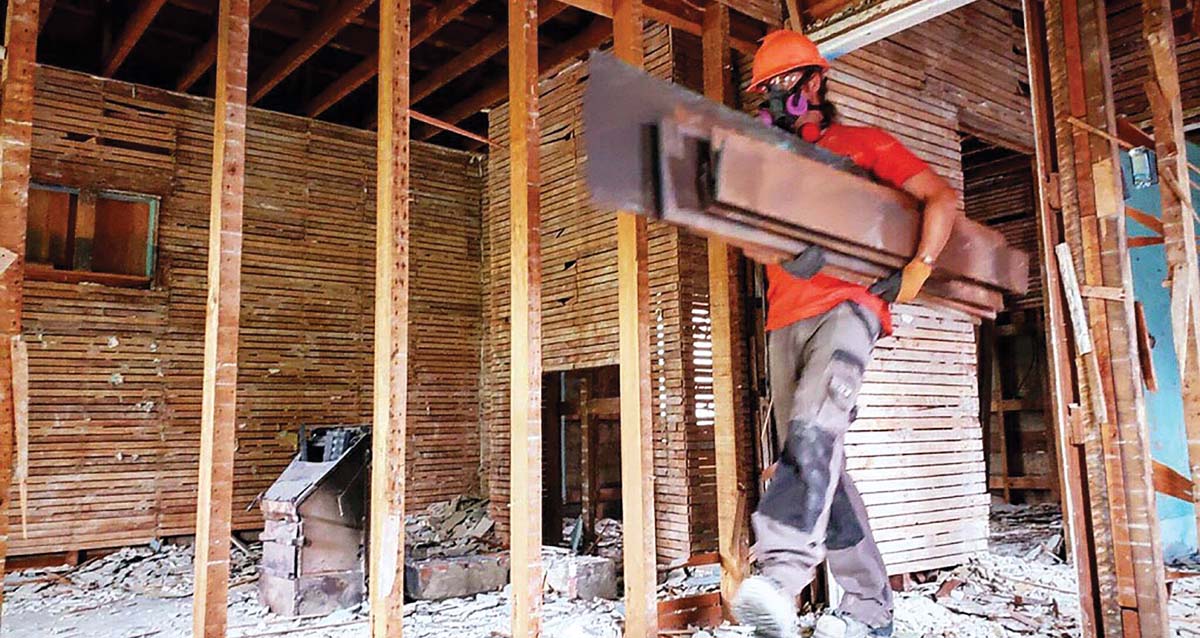Deconstructivism

De-constructing buildings allows materials to be salvaged for recycling and re-use, feeding into a circular economy. Photo courtesy Unbuilders
Architects are usually focused on the beginning of buildings, paying little attention to their end. But as climate impacts worsen, it?s a reckoning they?ll need to face: the four million tonnes of construction waste that Canada landfills annually comprises 40% of its total landfill content. That material leaches chemicals and releases CO2?and a lot of it could have been recycled, lessening the demand for new materials.
Adam Corneil, a Vancouver area certified Passive House Builder, saw this waste up close: he was constantly witnessing older buildings being torn down to make way for new ones. ?I saw a lot of value in the old lumber that built our cities, which was being landfilled,? he says. So he started Unbuilders. Instead of demolishing homes, his crews meticulously deconstruct them. Materials such as drywall, concrete, and asphalt shingles are recycled, while reusable hardware and fixtures are donated to Habitat for Humanity. Structural wood in good condition?which in older West Coast buildings is often tight-grained, highly valuable old-growth lumber?is appraised by an outside party and purchased by Unbuilders? sister company, Heritage Lumber, for repurpose and resale.
The process is more time-consuming than a regular demolition, says Corneil, but the building owner recoups much of the cost difference?either through a donation ...
_MFUENTENOTICIAS
canadian architect
_MURLDELAFUENTE
https://www.canadianarchitect.com/
| -------------------------------- |
| Mobile Studio Architects creates giant flip-books in the forest |
|
|
Villa M by Pierattelli Architetture Modernizes 1950s Florence Estate
31-10-2024 07:22 - (
Architecture )
Kent Avenue Penthouse Merges Industrial and Minimalist Styles
31-10-2024 07:22 - (
Architecture )






